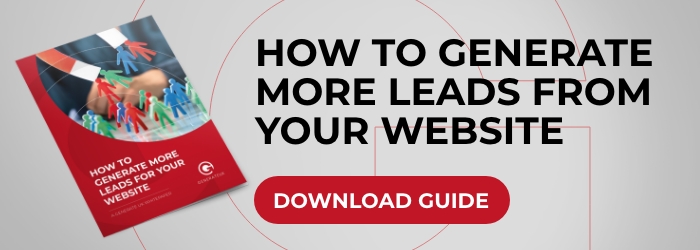Are the wrong visitors coming to your website?
In this three-part series, we will take you through some of the steps you can take to identify where your lead generation efforts are going wrong, and what you can do to fix it.

“Our website isn’t generating enough leads”
This is a common problem that customers often come to us to solve. They know that their website, and digital marketing activity, could be doing better, but they’re not sure what they need to do to get there.
There are many ways to improve your website’s lead generation capabilities, but first you need to diagnose what’s causing the problem in the first place.
The common barriers to effective lead generation
In our experience, we find that the majority of our client’s lead generation issues can be boiled down to three factors:
- The wrong visitors are coming to the website
- Potential customers cannot find the website
- The website is not optimised for lead generation
In this three-part series, we will take you through some of the steps you can take to identify where your lead generation efforts are going wrong, and what you can do to fix it.
The wrong visitors are coming to the website
This is a more common issue than you might think.
One of the most frequent reasons that websites do not generate leads, is that the visitors coming to the site were not interested in your business’ products or services in the first place.
Here’s how you can tell:
- High bounce rates on landing pages
- Visitors drop off before getting to the converting content
- Repeat visitors are low
- High exit rates on product / service pages
- Low click-through rates on advertising and search listings
So, what can you do to address it?
Take a look at your most popular landing pages to see where users are coming from

Third-party analytics platforms such as Google Analytics are packed with valuable information on where your visitors are arriving on your website, where they’re leaving, and, most importantly, where they’re coming from.
It’s all well and good to optimise your most popular landing page designs to encourage conversions, but if the wrong audience is arriving on the page, than the efforts will most likely be futile.
For example, are you receiving a high amount of traffic from search engines for products or services that you do not offer? Or, are you running un-optimised paid campaigns to users not ready to convert?
Use the data to your advantage to see what could be prohibiting users from engaging further with your content.
As data expert, Thomas Redman puts it “where there is data smoke, there is business fire.”

Review your current advertising targeting
As the old saying goes, you need to spend money to make money.
According to a study by market research specialists Nielsen, the average Return on Ad Spend (ROAS) across all industries was 2.87:1.
So, this means that for every £1 spent on advertising, the average company made £2.87 in return – however, it’s simply not the case to just switch on a campaign and hope for the best.
Advertising campaigns require ongoing management and optimisation to see the best results.
When was the last time you reviewed your paid media messaging and targeting?
Platforms such as Google Ads, Facebook and LinkedIn frequently change their targeting parameters.
So, chances are, if you’ve not optimised your campaigns recently, they may not be conforming to best practice guidelines, leading to poor quality traffic as a result.
Refresh your personas and audience targeting
To create content that engages with your target audience, you first need to understand them.
To do this, you need to conduct research on your audience and discover their:
- Problems – what actively impairs their day to day activities?
- Desires – what motivates your audience?
- Challenges – what gets in the way of your audience achieving their desires?
By understanding this, you can begin to create content that is tailored towards your audience, and thus more likely to convert.
When researching your audience and their needs, it’s important to look internally as well as externally.
Within your business, you already have access to some of the most important audience research tools at your disposal; your customers.
It’s vital you take the time to understand your existing audience, what brought them to your company, why they choose to use your company, and what their opinions are of your website and its content.
Once you understand this, you will be in a much better position to reach, communicate and engage with similar prospects.
Conduct a brand refresh to resonate with your audience

Your brand is crucial to your business.
Building and nurturing a positive association with your audience as a trusted, helpful, and industry leading business, over time, lead your customers to think of you, and your products and services, first.
An effective brand refresh can change how people perceive your business, and make sure more customers are aware of who you are, and what you stand for.
If your current brand messaging isn’t leaving your audience to firmly understand; who you are, what you stand for, or how you can help, than a refresh could be in order.
Note: When refreshing you branding, it’s important that your brand codes e.g. your brand colours, core logo design and other elements that are associated with your business, remain consistent. Adopting a new colour palette, or completely redesigning your logo may be tempting, but can do more harm than good.
About Generate UK
We empower ambitious B2B companies to generate growth through creative marketing.
Our mission is to help companies understand the true value in digital marketing and set out to help those organisations develop and implement new technology and processes to deliver a growth marketing strategy in line with their goals.
Partnership is key to our approach. We work closely with you to identify what will drive growth for your business, and provide a range of digital marketing services to achieve it.
We remain the only UK marketing agency to be awarded the Customer Service Excellence+ Accreditation, demonstrating our commitment to our clients.
Based in Theale, Reading, West Berkshire.
